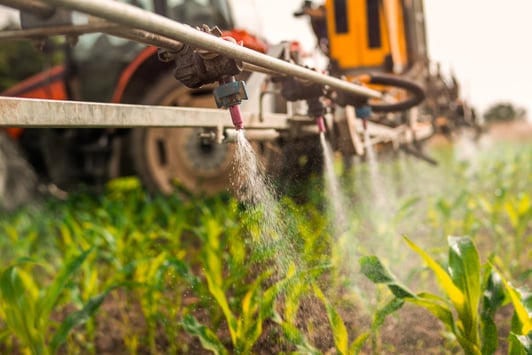An insecticide cannot legally be used for any purpose other than the purpose shown on the approved label. Application and timing is important to maximise effectiveness of insecticides, reduce cost, and reduce impacts on non-target organisms. Precautions should be taken particularly when transporting, mixing and applying insecticides.
Numerous pesticides are registered with the Australian Pesticides and Veterinary Medicines Authority (APVMA) for use in Western Australia. Our Pest and Disease Information Service (PaDIS) can also put you in contact with an insecticide expert.
Download the 2025 insecticide guides
The department provides up-to-date insecticide spray guides each year to help growers and consultants manage insect pests in canola, lupin, and cereal crops. For specific product application rates and other details, please refer to the insecticide product label.
Monitor crops, identify insect pests, and check control thresholds before spraying
- When pests appear in a crop, monitor closely. Do not immediately apply insecticides.
- Correctly identify insect pests and population densities before making spraying decisions.
- Determine whether insect pest numbers meet or exceed control threshold recommendations.
- Growers can request a free broadacre insect and disease diagnosis via the PestFacts WA Reporter app.
Beneficial insects
When checking crops for pest insects, also, monitor for and count beneficial insect species before making treatment decisions.
When applying insecticides, beneficial insects, especially parasitoid wasps, are often the first to be eliminated. Most beneficials are more susceptible than pests to insecticides and, if spraying commences immediately after the pest is observed, predators and parasitoid wasps will be removed as a viable, natural form of control.
Spray rates and timing
Correct rates and timing improve the effectiveness of insecticide spraying. Follow label rates and recommendations to ensure insecticide sprays are applied when insect pests are most likely to be contacted by the spray.
MyPestGuide CropScout is a web and mobile-based app designed to assist consultants and other field technicians determine spray timing and apply spray thresholds for pests, such as aphids, in crops.
Prevent or delay insecticide resistance
Responsible use of insecticides is the key to delaying the development of insecticide resistance, which occurs when insect populations that are no longer controlled adequately by insecticide application develop. This usually occurs as a response to repeated use of a single insecticide active ingredient. It can also occur through repeated use of closely related insecticide active ingredients, using a similar mode of action.
Methods to reduce insecticide resistance:
- Rotate insecticide groups to prevent over-use of any one product or chemical activity group. Avoid using the same chemical/mode of action more than necessary and follow label instructions.
- Ensure insecticides are working best by applying them in the most effective and appropriate manner. Before applying insecticide, ensure the targeted insect pest is present. When applying insecticide, adhere to insect control threshold levels and follow label recommendations, rates, and coverage. Always use the label rates according to the manufacturer’s recommendations.
- Use insecticides in conjunction with other management tools, such as cultural practices or growing more resistant varieties so fewer or less frequent insecticide applications are required.
Compiled by the department’s PestFacts WA service team as part of the Grains Research and Development Corporation's project: DPIRD Seasonal status of pests and diseases delivered to growers.
For more information, refer to our current Western Australian crop sowing guide.

